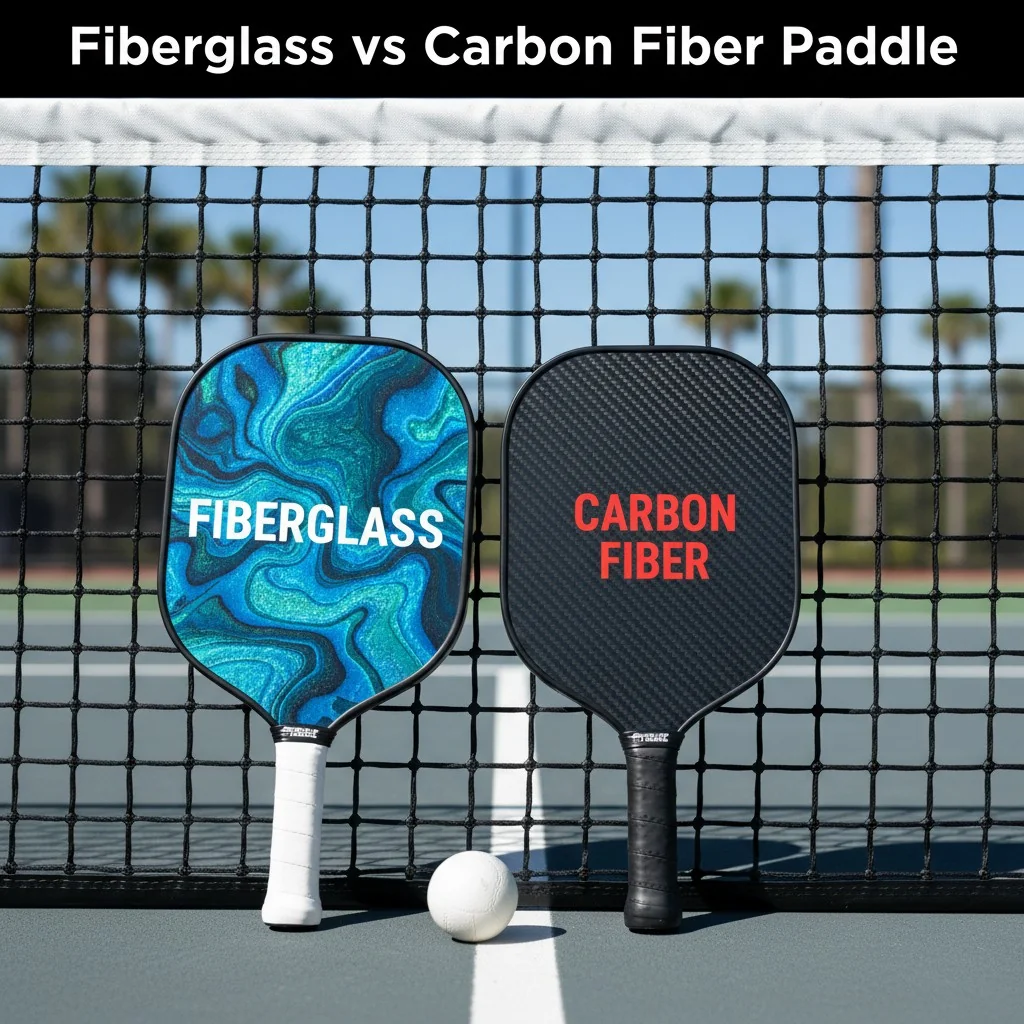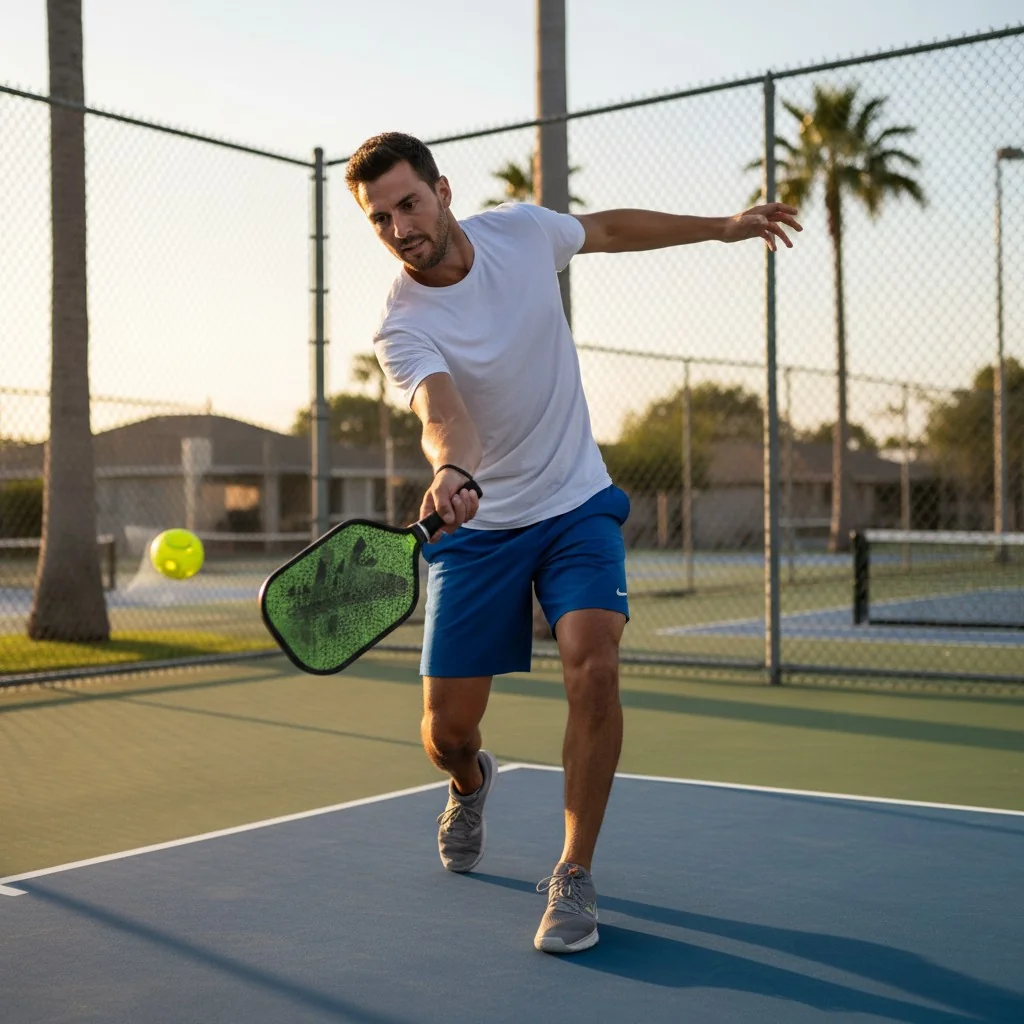Choosing the right paddle material1 feels overwhelming. A wrong choice can confuse your customers and hurt your brand’s reputation. I’m here to give you the clear, factory-floor insights you need.
Yes, fiberglass pickleball paddles2 are good, especially if your customers want easy power and a lively feel. They provide excellent pop for drives and volleys, but often trade off the control and sustained spin found in modern raw carbon fiber paddles.
When I first started working in a paddle factory, the hum of the machines was all about producing powerful fiberglass faces. The market has changed, but the core question for any brand or retailer remains: which material is right for your customer? Understanding the difference isn’t just about tech specs; it’s about matching a player’s needs to the right product. Let’s break down what you need to know to make smart decisions for your business and delight your customers.
Fiberglass paddles are the only choice for professional players.False
While some pros use fiberglass, raw carbon fiber is currently more popular on the pro tour for its control and spin characteristics.
The material of a paddle's face significantly impacts its power and control.True
The face material is a primary factor in how a paddle plays, dictating the ball's rebound (power) and the surface's ability to grip the ball (spin and control).
Are fiberglass pickleball paddles good for most players?
Your customers are asking if fiberglass is a good choice. They see a lot of options and feel lost. You need a simple, direct answer to guide them to the right purchase.
Yes, fiberglass is a strong choice for players who want easy power and a punchy feel. It’s great for drives, putaways, and quick net exchanges. The trade-off is a smaller sweet spot3 and less spin compared to raw carbon fiber.
When I advise brands on their product lines, I tell them to think about player needs. Fiberglass is a fantastic solution for a specific type of player. The face of a fiberglass paddle acts a bit like a trampoline, flexing more on impact and shooting the ball off with more speed. This is what we call "pop" or "free power." It’s a huge help for newer players who haven’t developed a full swing yet, or for power players4 who want to maximize the speed of their shots. However, this "trampoline effect" means the ball doesn’t stay on the paddle face as long. This shorter dwell time can make it harder to control soft shots or generate heavy topspin. For your business, this means positioning fiberglass paddles as the go-to option for power and immediate feedback.
Fiberglass paddles were invented in 2020.False
Fiberglass has been used as a paddle face material for many years, long before the recent surge in pickleball's popularity.
Fiberglass faces tend to feel 'poppy' because the material flexes more upon impact than carbon fiber.True
Fiberglass has a lower stiffness than carbon fiber, allowing it to deform more and return energy to the ball more quickly, creating a powerful, poppy sensation.
How do fiberglass, carbon fiber, and graphite change on-court performance?
The material names sound technical and confusing. Your customers struggle to understand how "fiberglass" versus "carbon fiber" actually translates to their game, leading to purchase hesitation.
Fiberglass delivers the most power. Raw carbon fiber offers the most control and spin. Graphite is a stiff material that provides good feedback but is often just a thin layer, with the overall feel depending on the complete construction.
In my years of sourcing and developing paddles, I’ve seen the market shift dramatically. It’s crucial for you to understand these materials to build a competitive product line.
Power vs. Control
Fiberglass is the king of "free power." The ball jumps off the face. Raw carbon fiber, on the other hand, is known for being softer. The ball "dwells" on the face a bit longer, which gives players a greater sense of control for dinks, drops, and resets.
Spin Potential
This is where the biggest change has happened. Older paddles used gritty paint for spin, which wore off quickly. Modern raw carbon fiber faces have a natural, long-lasting texture. Independent tests consistently show these surfaces generate higher spin (RPMs) and maintain it for longer. Fiberglass can produce good spin, but it often relies on applied textures that may not last as long as a raw carbon surface.
Forgiveness and Feel
A paddle’s "forgiveness" relates to its sweet spot. Carbon fiber paddles are often described as having a larger, more consistent sweet spot. This means even off-center hits feel solid and go where you intend. Fiberglass paddles can feel a bit less forgiving outside the center.
Here’s a simple table I use to explain this to my clients:
| Face Material | Power | Spin (Longevity) | Forgiveness | Typical Customer Profile |
|---|---|---|---|---|
| Fiberglass | High | Medium | Medium | Beginner, Power Player |
| Raw Carbon Fiber | Medium | High | High | Control Player, All-Courter |
| "Graphite" | Medium-High | Medium | Medium | Player seeking crisp feedback |
All carbon fiber paddles are better for spin than all fiberglass paddles.False
While raw carbon fiber generally excels at spin, a well-designed fiberglass paddle with a high-quality textured surface can produce more spin than a poorly designed or smooth-faced carbon fiber paddle.
The term 'graphite' on a paddle often refers to a very thin cosmetic or stiffening layer, not the entire face.True
Many 'graphite' paddles are composite paddles where a thin graphite sheet is layered over other materials, like fiberglass or a polymer core.
What do USA Pickleball rules allow—and limit—on paddle performance?
You want to innovate and offer the "best" paddle. But you worry about creating a product that gets banned from tournament play, which would be a disaster for your brand’s credibility and inventory.
USA Pickleball strictly regulates paddle performance. They set limits on size, surface roughness, friction, and reflectivity. Any paddle used in sanctioned events must be tested and appear on their approved list. This prevents an "arms race" and ensures fairness.
I can’t stress this enough to my partners: compliance is not optional. I once saw a promising new brand invest heavily in a paddle with a revolutionary "super-grip" face. The problem? It was too gritty and failed USA Pickleball’s friction test. They couldn’t sell it for tournament play, and their launch was a failure. You must build your products within the rules from day one.
Key Constraints to Know
The rules are designed to keep the game about skill, not just equipment. Marketing claims about "illegal spin" or "insane pop" are often just hype because every legal paddle has to pass the same tests. Here are the core rules your design and manufacturing must follow:
| Parameter | Limit / Rule | Why It Matters for Your Business |
|---|---|---|
| Size | Length ≤ 17 in; Length + Width ≤ 24 in | Defines the design canvas for shape (elongated, standard, etc.). |
| Roughness/Friction | Must be within limits on Starrett & Friction tests | Directly constrains how much spin a paddle can legally generate. |
| Reflection | Must not be overly reflective (under 40 gloss units) | Prevents distracting glare for opponents. Affects finish choices. |
| Alterations | Only grip, edge tape, and lead tape allowed | Your customers can’t modify the face; the performance you build is what they get. |
| Approval | Must be on the USA Pickleball Approved List | This is your license to sell for competitive play. Always verify. |
Before you go into mass production, make sure your factory sends samples for official testing. It’s a small investment that protects your entire business.
You can add a gritty spray to your paddle face to increase spin for tournaments.False
Altering the paddle face, including adding any texture or spray, is illegal under USA Pickleball rules and will make the paddle non-compliant for sanctioned play.
USA Pickleball has no limit on how thick a paddle can be.True
The official rules specify limits for length and width, but not for thickness or weight, allowing for innovation in core design (e.g., 14mm, 16mm, 20mm cores).
Who should pick fiberglass (and who shouldn’t)?
You need to define the target customer for your fiberglass paddles. If you market a power paddle to a control player, you’ll get bad reviews and returns. Clear messaging is key to sales.
Choose fiberglass if you are a power-first player, a newer player needing free pace, or someone who plays in cold weather. Avoid fiberglass if your top priority is control, a soft touch for resets, and maximizing topspin.
Helping your customers self-identify is the secret to good marketing. When I work with a brand like Recess Pickleball, whose mission is about fun and accessibility, a colorful, easy-to-use fiberglass paddle is a perfect fit for their target audience of new and casual players. For a brand targeting serious tournament players, the conversation shifts to raw carbon fiber.
The Ideal Fiberglass Player
This player wants to hit hard and end points. They might be a newer player who struggles to generate their own pace and needs the paddle to do some of the work. Or they could be an aggressive singles player who relies on powerful drives. Fiberglass also performs well in colder temperatures or with softer balls, where the extra pop helps counteract the deadened feel.
Who Should Look Elsewhere?
If a player’s game is built around the soft game—dinks, drops, and resets—they will likely prefer the control and dwell time of raw carbon fiber. If they complain about popping the ball up or hitting shots long, the extra power from fiberglass can make those problems worse. These players benefit from a paddle that absorbs pace and allows for more finesse.
Here’s how you can guide your customers:
| Player Priority | Recommended Face | Why It Works |
|---|---|---|
| Power-First ("Banger") | Fiberglass | Maximizes ball speed on drives and volleys. |
| Control-First ("Dinker") | Raw Carbon Fiber | Offers a softer feel and longer dwell time for precise placement. |
| Beginner | Fiberglass | "Free power" helps them get the ball over the net easily. |
| Spin-Focused Player | Raw Carbon Fiber | The raw texture provides superior, long-lasting spin potential5. |
Fiberglass paddles are only for beginners.False
While great for beginners, many advanced and professional players choose fiberglass paddles specifically for their power and pop, especially in doubles for quick hand battles at the net.
Playing in cold weather can make a paddle feel less powerful.True
Cold temperatures make the pickleball itself harder and less bouncy. A fiberglass paddle's inherent pop can help compensate for this effect, making it a good choice for cold climates.
Conclusion
Ultimately, fiberglass paddles are a great choice for power, while raw carbon fiber is better for control and spin. Know your customer’s playing style to guide them to the perfect paddle.
References
-
Learn about different paddle materials and their impact on gameplay. ↩
-
Explore the advantages of fiberglass paddles for power and performance in pickleball. ↩
-
Discover how the sweet spot affects paddle performance and player experience. ↩
-
Learn which paddles enhance performance for aggressive players. ↩
-
Find out how different materials influence spin and control in your game. ↩









